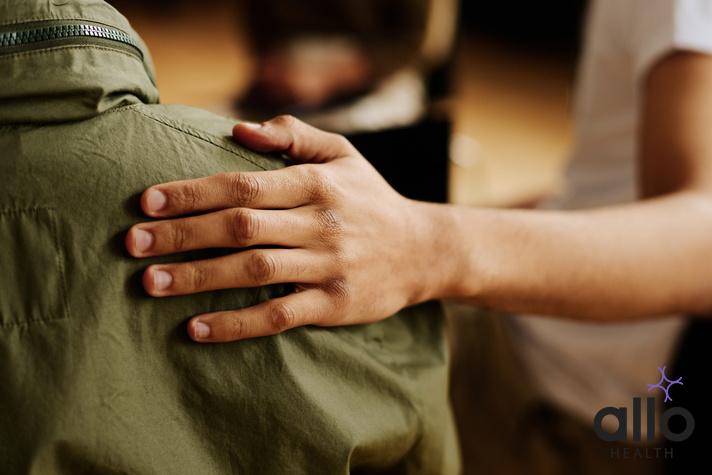Understanding Sexual Trauma

Allo Health is dedicated to personalized well-being, offering support and trusted information tailored to individual health goals. The platform emphasizes human-generated content, led by a distinguished medical team of experts, including physicians and sexual health specialists. Their commitment to credibility involves rigorous fact-checking, authoritative research, and continuous updates to ensure accurate, up-to-date information. Allo Health's unique approach goes beyond conventional platforms, providing expert-led insights and a continuous commitment to excellence, with user feedback playing a crucial role in shaping the platform's authoritative voice.

Dr Sanina Mansoor holds MBBS degree from Yenepoya university,Mangalore.She has 8 years of experience working as a medical officer at various health centres and medical colleges.
Why This Was Upated?
Our experts continually monitor the health and wellness space, and we update our articles when new information became available.
Updated on 10 February, 2025
- Article was updated as part of our commitment to diversity, equity, and inclusion.
"The following blog article provides general information and insights on various topics. However, it is important to note that the information presented is not intended as professional advice in any specific field or area. The content of this blog is for general educational and informational purposes only.
Book consultation
The content should not be interpreted as endorsement, recommendation, or guarantee of any product, service, or information mentioned. Readers are solely responsible for the decisions and actions they take based on the information provided in this blog. It is essential to exercise individual judgment, critical thinking, and personal responsibility when applying or implementing any information or suggestions discussed in the blog."
Trigger Warning: This post discusses sexual trauma and violence.
In today’s world, the harsh reality is that sexual trauma is alarmingly prevalent. It can happen to anyone, regardless of age, gender, or background. The impacts are far-reaching and can leave deep emotional and psychological scars that last a lifetime. As a society, it’s crucial that we gain a better understanding of sexual trauma, its various forms, and how we can support survivors on their healing journey.
What is Sexual Trauma?
Sexual trauma encompasses a wide range of traumatic experiences involving non-consensual sexual acts. This includes sexual assault, rape, child sexual abuse, and sexual harassment. Let’s break down these terms:
- Sexual Assault: Any unwanted sexual contact or behavior that occurs without explicit consent. This can involve attempted rape, unwanted sexual touching, or fondling.
- Rape: A form of sexual assault involving non-consensual penetration, whether vaginal, anal, or oral. It’s a horrific violation of bodily autonomy and personal boundaries.
- Child Sexual Abuse: Any sexual activity involving a child. This can include indecent exposure, fondling, or exploitation. The trauma inflicted on these vulnerable victims is unimaginable.
- Sexual Harassment: Unwelcome verbal or physical conduct of a sexual nature that creates an intimidating, hostile, or offensive environment. This can occur in various settings, including workplaces, schools, and public spaces.

The Prevalence and Impact
The statistics on sexual trauma are staggering and reflect a global crisis. According to the World Health Organization (WHO), one in three women globally has experienced physical or sexual violence, often at the hands of an intimate partner or someone known to them. But it’s not just women who are affected; men and individuals of all gender identities can be victims too.
The impacts of sexual trauma can be devastating and long-lasting. Survivors may experience a range of mental health issues, including post-traumatic stress disorder (PTSD), depression, anxiety, and substance abuse. Physical health problems, difficulties in interpersonal relationships, and a compromised sense of safety and trust are also common.
Trauma Response and Coping Mechanisms
When faced with a traumatic event like sexual violence, our bodies and minds respond in complex ways. Common reactions include shock, denial, fear, anxiety, anger, guilt, and shame. These are natural responses to an abnormal and deeply distressing experience.
Coping mechanisms can vary widely among survivors. Some may seek support from loved ones, engage in self-care activities, or pursue professional help. Others may resort to maladaptive coping strategies like avoidance, substance abuse, or self-harm as a way to numb the pain.
Factors Influencing Trauma Responses
It’s important to understand that each individual’s experience with trauma is unique and shaped by various factors. Personal attributes like age, gender, personal history, resilience, and coping strategies can all play a role.
Environmental factors, such as social support systems, cultural beliefs, access to resources, and societal attitudes towards sexual violence, can significantly impact a survivor’s healing process.
Additionally, the characteristics of the trauma itself, such as the type of trauma, its duration and frequency, and the relationship to the perpetrator, can influence the severity of the trauma response.

Trauma-Informed Care and Support
As a society, we must prioritize trauma-informed care and support for survivors of sexual trauma. This approach acknowledges the widespread impact of trauma and aims to create a safe, supportive, and empowering environment for healing.
Key principles of trauma-informed care include:
- Safety: Ensuring physical and emotional safety for survivors.
- Trustworthiness: Building and maintaining trust through transparency and clear communication.
- Peer Support: Facilitating connections with others who have had similar experiences.
- Collaboration: Involving survivors in decision-making and treatment planning.
- Empowerment: Recognizing the strength and resilience of survivors and promoting their autonomy.
- Cultural Sensitivity: Respecting and integrating cultural beliefs and practices into the healing process.
Support services for survivors may include counselling, therapy, support groups, legal assistance, and advocacy. It’s crucial that these resources are readily available, accessible, and trauma-informed to ensure effective and compassionate care.
Moving Forward
Understanding sexual trauma is just the first step in addressing this pervasive issue. As individuals and as a society, we must continue to raise awareness, challenge harmful attitudes and behaviors, and work towards creating a culture of consent, respect, and accountability.
Remember, if you or someone you know has experienced sexual trauma, there is help and support available. Reach out to trusted resources, such as counselors, hotlines, or support groups. The healing process may be long and challenging, but it is possible to reclaim your life and find empowerment in your journey.








































